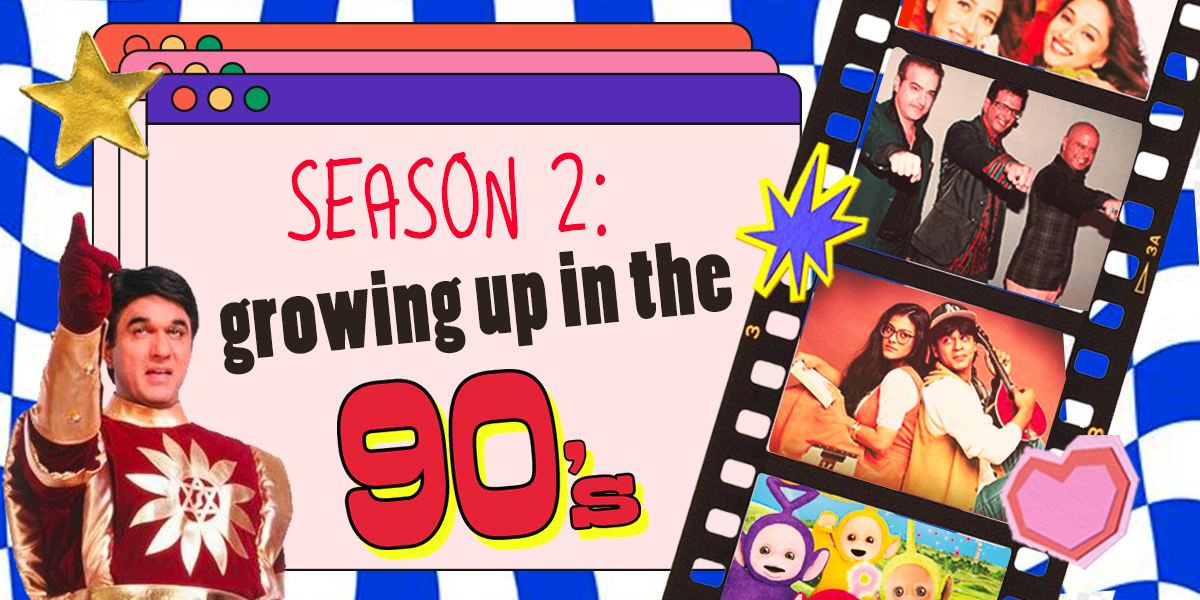Do you remember opening your first Bourbon biscuit to lick off the cream inside the rectangular biscuit sandwich? How many of us associate biscuit eating with the “Britannia kid”, Sachin’s companion with his flashy smile, and the shrill “ting ting ti-ding”? Remember Pepsi Blue, the Lays Caribbean flavours – and all the things that were suddenly so available? Flashy packaging, consistent flavours, the standardisation of palettes. Food is many things — nostalgia, taste, and memory, but more than anything — it is industry. In the early 90s, after the economic liberalisation of India’s economy, when the country opened to foreign manufacturing and factory-produced food, nothing was ever the same.
Here we are with Growing up in the 90s, a season about the 90s’ nostalgia, food, and the industry that crowded it. Even if we now cannot think back to a time without cream biscuits and cornetto ice-creams, enthucutlet’s 90s season harks back to a time when all of this was just beginning. It thinks of the early days of foreign industry in India, at the brink of change.
As Rinka Banerjee, the founder of Thinking Forks told us about the time, “sensorial preferences became key”, there were now expectations connected to a product, and aspirations too. “Take the cornetto ice-cream. You had soft ice cream and molten, hard chocolate in the end. The textures game was strong because you had foreign technologies coming in, chemicals to emulsify differently, and distinct machines to create this perfect meeting of textures and flavours that everyone seems to take for granted. Domino’s Pizza, a Maharaja Mac, these are not attached to our imaginations only because of how they taste, their appeal lies in how they are curated and packaged, the memories they enable, and the gestures that foods like these make permanent in the brains and hearts of those that encounter them.” So how did the coming of new industry affect old models? How did nostalgia – the ever present candidate – become commodified? What were our famous cricketers eating in the 90s – a time before keto-sushi and vegan burgers? Why was Kellogg’s, the big multinational brand that overtook America unable to make inroads into the Indian consumer base? How did menus change with the coming of fast food places, and how did new menus become maps of ourselves? What did it take to open a path-breaking, genre-defining restaurant in an Indian megapolis in the 90s, just as the country was opening up? In this season, our writers think about all this and more.
So how did the coming of new industry affect old models? How did nostalgia – the ever present candidate – become commodified? What were our famous cricketers eating in the 90s – a time before keto-sushi and vegan burgers? Why was Kellogg’s, the big multinational brand that overtook America unable to make inroads into the Indian consumer base? How did menus change with the coming of fast food places, and how did new menus become maps of ourselves? What did it take to open a path-breaking, genre-defining restaurant in an Indian megapolis in the 90s, just as the country was opening up? In this season, our writers think about all this and more.
What does a 90s refrigerator tell us about people’s lives? Was McDonald’s the motherlode of today’s QSRs? How did the Maruti Suzuki van make caterers’ lives easier? What does a burger in Bollywood tell us about young womens’ dreams? Which bits of the 90s cocktail lore and pop culture massively influence the way we drink today? In India’s Northeast, the 90s were not the same as the mainland – so how did people live, and what was special to them? In this season, our writers are critical, nostalgic, and also anti-nostalgic. What drives Maggi beyond its ‘food for the soul’ narrative, and how does it enable small-scale industry? Our enthucutlet writers find out in this season.
This season has those classic nostalgic bites, yes – but it is also not only nostalgic, it also thinks about how that time defines the way we now eat.

